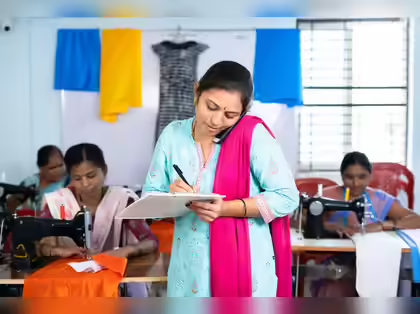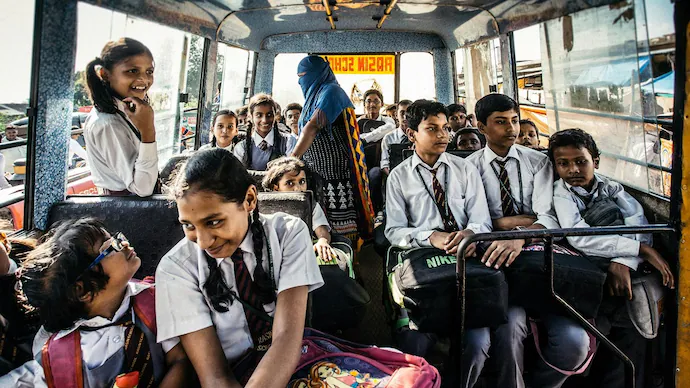- Courses
- GS Full Course 1 Year
- GS Full Course 2 Year
- GS Full Course 3 Year
- GS Full Course Till Selection
- Answer Alpha: Mains 2025 Mentorship
- MEP (Mains Enrichment Programme) Data, Facts
- Essay Target – 150+ Marks
- Online Program
- GS Recorded Course
- Polity
- Geography
- Economy
- Ancient, Medieval and Art & Culture AMAC
- Modern India, Post Independence & World History
- Environment
- Governance
- Science & Technology
- International Relations and Internal Security
- Disaster Management
- Ethics
- NCERT Current Affairs
- Indian Society and Social Issue
- NCERT- Science and Technology
- NCERT - Geography
- NCERT - Ancient History
- NCERT- World History
- NCERT Modern History
- NCERT Medieval History
- CSAT
- 5 LAYERED ARJUNA Mentorship
- Public Administration Optional
- ABOUT US
- OUR TOPPERS
- TEST SERIES
- FREE STUDY MATERIAL
- VIDEOS
- CONTACT US
FAIR SHARE FOR HEALTH AND CARE REPORT BY WHO
FAIR SHARE FOR HEALTH AND CARE REPORT BY WHO
27-03-2024
In March 2024, the World Health Organization (WHO) released a new report called the Fair Share for Health and Care report, which talks about the gender gap in global healthcare.
Key Highlights
-
Gender Disparities in Health and Care Workforce
- Around 67% of the global health and care workforce are women, and they do about 76% of all unpaid care work.
- This shows big differences between men and women in both paid and unpaid care work.
- Women in low- or middle-income countries could have $9 trillion more if they got paid the same as men and had the same job opportunities.
-
Not Adequately (enough) Represented on Decision-Making
- Women aren't represented enough in decision-making roles. They're mostly in lower-status jobs like nursing and midwifery (the branch of medicine dealing with childbirth and care of the mother).
- But they're not seen as much in leadership roles. Most medical specialties are still mostly men.
- In 35 countries, women made up 25% to 60% of doctors but 30% to 100% of nursing staff.
-
Underinvestment in Health Systems:
- Because health and care work don't get enough investment, there's a problem. Women do a lot of unpaid care work, which stops them from joining paid jobs.
- This makes it hard for them to be financially independent and makes gender equality difficult.
-
Devaluation of Caregiving:
- Caregiving is mainly done by women and is often not valued enough.
- This results in lower pay, bad working conditions, reduced productivity, and negative economic effects.
-
Implications of Gender Pay Gaps:
- Gender pays gaps hinder women's ability to invest in their families and communities, where they usually reinvest.
- Globally, women direct around 90% of their earnings to their families' well-being, while men only contribute 30-40%.
-
Higher Levels of Violence:
- Women in healthcare face more gender-based violence.
- Roughly a quarter of workplace violence worldwide occurs in healthcare.
- About half of healthcare employees report experiencing violence at work.
-
Indian Scenario
- In India, women spend about 73% of their daily working time on unpaid work, compared to men's 11%.
- During Covid-19, nearly 4.5 million in the UK did unpaid work, with 59% being women.
-
Global Crisis of Care
- A lack of investment in health and care work over many years leads to a global care crisis.
- Slow progress towards Universal Health Coverage leaves many without essential health services, burdening women with unpaid care work.
-
Key Recommendations:
- Improve working conditions for all health and care workers, particularly those in predominantly female roles.
- Ensure gender equity in the paid workforce.
- Enhance work conditions, wages, and ensure equal pay for equal work in health and care.
- Address the gender gap in caregiving, support quality care, and protect caregivers' rights and well-being.
- Ensure that national statistics accurately capture, measure, and value all health and care work.
- Invest in strong public health systems.
-
Government Initiatives to Address Gender Disparity
-
Economic Participation and Health and Survival:
- Beti Bachao Beti Padhao: Safeguards, educates, and supports the girl child.
- Mahila Shakti Kendra: Aims to empower rural women through skill development and job opportunities.
- Mahila Police Volunteers: Links police with communities to assist women in distress.
- Rashtriya Mahila Kosh: Provides micro-credit to poor women for livelihood activities.
- Sukanya Samriddhi Yojna: Empowers girls economically by opening bank accounts for them.
-
Female Entrepreneurship:
- Initiatives like Stand-Up India and Mahila e-Haat promote women entrepreneurs through online platforms.
- Entrepreneurship and Skill Development Programme (ESSDP) supports female entrepreneurship.
-
Education:
- Kasturba Gandhi Balika Vidyalaya: Schools in Educationally Backward Blocks (EBBs).
-
Political Representation:
- Reserves 33% of seats in Panchayati Raj Institutions for women.
-
Capacity Building:
- Empowers elected women representatives for effective participation in governance processes.



